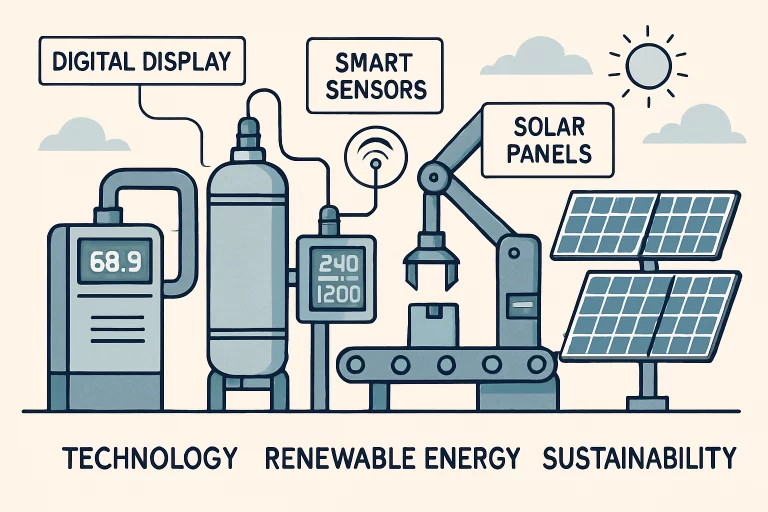Industrial facilities are transforming into innovation hubs, driven by digital technology, renewable energy integration, and sustainability. Trends like smart automation and eco-friendly manufacturing systems enhance efficiency, cost-effectiveness, and environmental accountability.
Industrial electrical equipment is undergoing significant changes due to rapid technological transformation, posing challenges for companies worldwide to keep pace and anticipate market shifts. Today’s demand for sophisticated electrical equipment extends far beyond traditional expectations of reliability and power—modern solutions must adapt to diverse and ever-changing operational needs, energy sources, and rigorous sustainability requirements. Organizations focus on developing intelligent, eco-conscious products to shape the next industry generation, emphasizing the need for adaptation or risk of being left behind.
Integration of Smart Technologies
Industry 4.0 is transforming how businesses manage their assets and anticipate operational requirements. It involves using advanced connectivity, data acquisition, and artificial intelligence (AI) in industrial electrical systems. The Industrial Internet of Things (IIoT) embeds millions of sensors in equipment, tracking critical metrics and transmitting data to analytics platforms. AI algorithms analyze this data, predicting wear or failure early, minimizing downtime, and facilitating dynamic adjustments. Predictive maintenance strategies use intelligent diagnostics to assess equipment condition, reducing maintenance expenses and unplanned outages. Adaptive control systems, like smart electrical panels and programmable logic controllers, allow equipment to adjust production output, regulate energy consumption, and modify environmental parameters in real-time. This reduces risk, enhances scalability, and enables enterprises to respond quickly to changes in demand or supply chain contingencies.

Advancements in Renewable Energy
Renewable energy sources transform industrial electrical equipment design and long-term vision. Manufacturers are focusing on reducing operational costs, reducing greenhouse gas emissions, and minimizing reliance on fossil-fueled grids. Compatibility with solar, wind, and other renewable sources is essential for reducing environmental impact and promoting self-sufficiency. Advanced battery storage systems and hybrid configurations are critical for capturing surplus energy during high renewable output. Leading-edge equipment is designed to interface seamlessly with microgrids and distributed energy resources, providing stability and flexibility. Innovations in industrial microwave manufacturing also reflect this shift, as energy efficiency and integration with sustainable power sources become central to production processes.
Emphasis on Sustainability
Environmental awareness and regulatory standards are driving a shift towards sustainability in industrial electrical equipment manufacturing. Companies must demonstrate that their operations, products, and processes actively reduce environmental impact. Green manufacturing practices, such as minimizing waste and optimizing energy use, are becoming standard. Eco-friendly materials and products are also being used, with modern devices constructed using biodegradable cases, recycled metals, or innovative materials. This approach leads to compliance with regulations, lower lifecycle costs, and favorable market reception. Companies prioritizing sustainability and transparency gain stronger customer relationships, enhanced brand loyalty, and improved access to emerging markets and investment capital.
Conclusion
The industrial electrical equipment sector is transforming through smart technological advancements, a transition to renewable energy, and sustainability innovation. Advanced automation and predictive intelligence enhance efficiency, while cleaner energy and circular manufacturing foster sustainable growth. Early investment in these technologies leads to global progress.
The post The Future of Industrial Electrical Equipment: Trends and Innovations appeared first on 25pr.